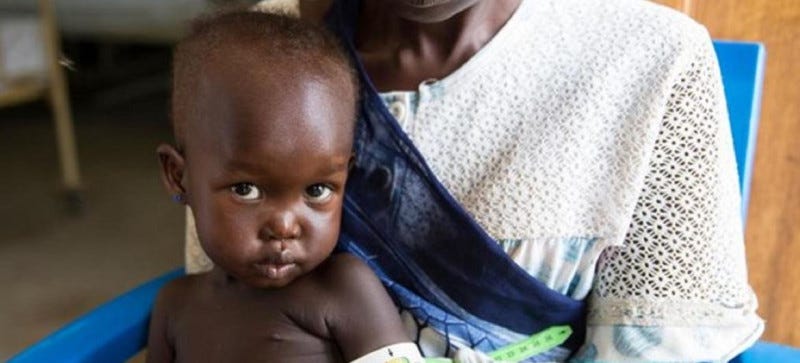Global Food Crisis Putting Millions of Young Lives at Risk
Eight million are severely wasted – the deadliest form of under nutrition - meaning they are 12 times more likely to die than children who get enough to eat.

US: Five UN agencies on Thursday called for urgent action to protect millions of malnourished children in the 15 countries hardest hit by the unprecedented food and nutrition crisis.
More than 30 million under-fives are suffering from wasting, or acute malnutrition, brought on by conflict, climate shocks, ongoing impacts of the COVID-19 pandemic, and the rising costs of living.
Children with the condition have weakened immune systems and are at higher risk of dying from common childhood diseases.
Eight million are severely wasted – the deadliest form of under nutrition - meaning they are 12 times more likely to die than children who get enough to eat.
Crisis could worsen
The appeal was issued by the Food and Agriculture Organization (FAO); the UN refugee agency, UNHCR; the UN Children’s Fund (UNICEF), the World Food Programme (WFP) and the World Health Organization (WHO).
They urged the international community to accelerate progress on the Global Action Plan on Child Wasting to prevent the growing crisis from becoming a tragedy.
Qu Dongyu, the FAO Director-General, warned that the situation is likely to deteriorate even further this year.
“We must ensure availability, affordability and accessibility of healthy diets for young children, girls, and pregnant and lactating women. We need urgent action now to save lives, and to tackle the root causes of acute malnutrition, working together across all sectors,” he said.
Five priority areas
The Global Action Plan aims to prevent, detect and treat acute malnutrition among children in the countries worst affected by the cascading crisis: Afghanistan, Burkina Faso, Chad, the Democratic Republic of the Congo, Ethiopia, Haiti, Kenya, Madagascar, Mali, Niger, Nigeria, Somalia, South Sudan, Sudan and Yemen.
It addresses the need for a multi-sectoral approach and highlights priority actions through maternal and child nutrition policy shifts, aimed at the food, health, water and sanitation, and social protection systems.
With needs mounting, the UN agencies have outlined five specific actions that will be effective in addressing acute malnutrition in countries affected by conflict and natural disasters, and in humanitarian emergencies.
Analysis, prevention, assistance
They include enhancing analysis of the determinants of child wasting; ensuring essential maternal and child nutrition interventions for early prevention, such as regular screening, and introducing specialized nutritious food products as part of emergency food assistance.
“At UNHCR we are working hard to improve analysis and targeting to ensure that we reach children who are most at risk, including internally displaced and refugee populations,” said Filippo Grandi, the UN High Commissioner for Refugees.
Scaling up these actions as a coordinated package will be critical both for prevention and treatment, and for saving lives, the partners stressed.
“The global food crisis is also a health crisis, and a vicious cycle: malnutrition leads to disease, and disease leads to malnutrition,” said Tedros Adhanom Ghebreyesus, the WHO Director-General.
“Urgent support is needed now in the hardest hit countries to protect children’s lives and health, including ensuring critical access to healthy foods and nutrition services, especially for women and children.”



